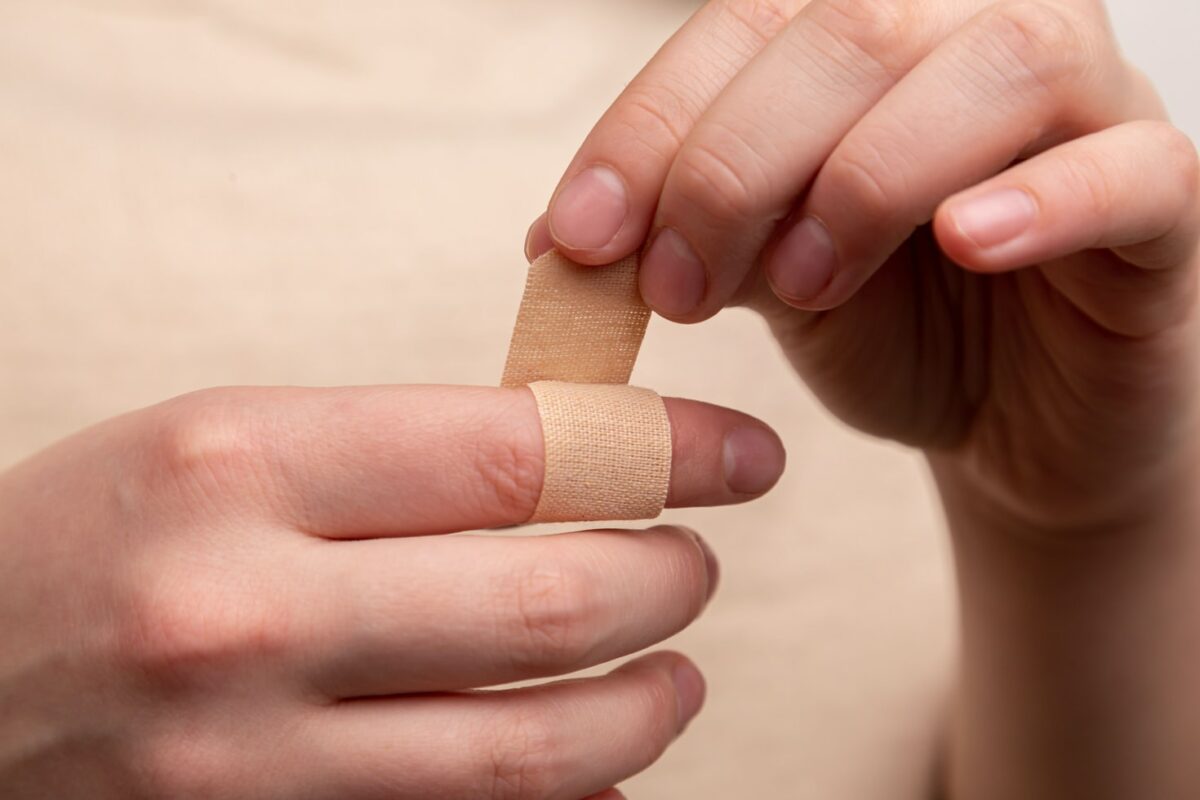Health Tips
How Often Should I Change Plasters?
Why should I change plasters? And how often?
A plaster is a small adhesive dressing that is used for injuries that do not require full-sized wound dressings. Sometimes known as Band-Aids in other countries, it protects the injured area from bacteria, dirt, contact, and further damage. It can also be used to hold two ends of the skin together to hasten the healing process.
Applying the Plaster
Before applying the plaster, make sure that all bleeding has been stopped by putting pressure on the area with any clean cloth, tissue, or gauze. Once it does stop, rinse the injury with cool water and use soap to clean the skin around the wound. It is important to keep the area surrounding the wound clean as not doing so may lead to infections down the road.
Applying a plaster properly involves cleaning and drying the injury and surrounding skin. After unwrapping the plaster from its container, hold it with the pad facing downwards and peel the protective strips but do not remove it. Lastly, place the pad down on the injury and pull away the strips. Press the edges of the plaster down to ensure it adheres to the skin properly.
Some may advise you to keep minor cuts and grazes uncovered or to have you “air-out” your injury. For the most part, this is a common myth as leaving a wound uncovered can expose it to bacteria and dirt. Even the smallest of cuts can become infected if left uncovered and exposed. It may also be rubbed, scraped, or knocked, which can interrupt the healing process and cause it to start bleeding again. However, small cuts that are unlikely to become dirty or make contact with your clothes can be an exception to this.
How often should I change plaster?
Dressings such as plasters should be replaced on a regular basis, preferably whenever they become dirty, wet, or if blood soaks through the padding. Some plasters may provide “moist wound healing” conditions that aid in speeding up the healing process. If your plaster of choice has this feature, then it is advisable to leave it in place for two days or longer in order to ensure proper healing.
A good rule of thumb is to change the plaster if it has trouble sticking to the affected area. You will be able to notice this as the plaster is not able to contain any blood or discharge coming from the wound. It may also be a sign to change the plaster when the injured area starts to itch. This is done in order to prevent further risks of infection. It may also be a good idea to apply an antiseptic spray or some other agent to keep the wound moist and keep away any chances of infection.
Another thing to take note of is that sometimes, your injury might be in an awkward place for the plaster to adhere to. Places like the elbow are a tricky spot to apply plasters to, so you may find yourself having to change them more frequently.
Different Kinds of Plasters
Various types of Plasters are available such as waterproof plasters and magnetic plasters. There are also medicated plaster for pain that aid in relieving some of the pain of the healing process. Chinese pain relief patches are also available to those who wish to use patches with natural ingredients, and to relieve msuchle aches instead of cuts and wounds. Medical Plasters like the Teh Seng Mieh Tong Kao “T.S” Herbal Plasters and Shu Jin Zhen Tong Balm K.T.T Medicated Plasters are some of the more traditional herbal plasters that uses over 15 natural ingredients. These ingredients make up to provide long lasting relief, as well as a warm and cooling sensation respectively.
These are available in different shapes, which can help in applying to difficult areas where a standard plaster cannot function well. It also helps to make sure that the bandage is applied to the wound with no gaps or wrinkles on it.
Make sure to choose the right type of plaster and to change it regularly as needed. Ensure that it is still sticking to the wound, covering it entirely. Once the scab develops, you may opt to remove the bandage altogether if you think that it is unlikely to be disturbed.
Disclaimer
ALWAYS consult a medical professional before attempting any self-medication. Do not take advice from the internet as every person reacts differently to each prescription.






